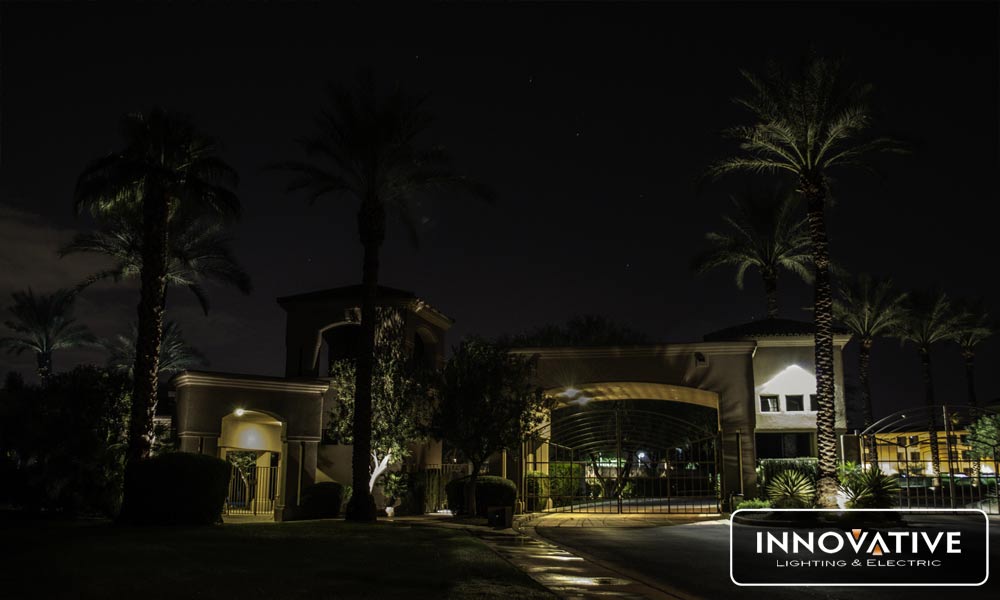Landscape lighting can be tricky, as it requires using an appropriate amount of light in the proper placement to draw attention to certain elements of a landscape in an appealing manner. Exterior lighting techniques such as silhouetting, highlighting and shadowing use outdoor lighting in creative ways to highlight particular landscape objects and create visual patterns. Using these techniques requires the proper exterior lighting plan and testing out different layouts. When properly set up, exterior lighting can turn a landscape into a work of art that shows off its best elements after the sun goes down.
Silhouetting
Silhouetting is a type of exterior lighting that can bring a dramatic feeling to a landscape when done properly by lighting the background. It creates a large amount of contrast between the object being highlighted and the background. It is harder to set up this type of exterior lighting, and it is typically reserved for circumstances where a background can be brightly illuminated against a silhouetted object. Dense and large plants in close proximity to a wall are a good object to consider using silhouetting on. Other objects may benefit from other lighting techniques unless they cannot be effectively lit from a front angle.
Highlighting
Highlighting is more commonly used as an exterior lighting technique and involves drawing attention to a landscape feature by placing a spotlight somewhere near its base and directing the angle of the light toward the object. By varying the angle and the distance of the spotlight, different exterior lighting designs are created. The amount of fixtures can also be varied, as larger objects may require multiple fixtures to highlight appropriately. Highlighting is used to create focal points in a landscape such as a tree, fountain, or sculpture. It is often used on multiple objects in a landscape to create more than one focal point.
Shadowing
Shadowing is an exterior lighting technique that is similar to silhouetting and involves creating a softer shadow than silhouetting. Trees and plants that are less dense are better objects to use for shadowing, and shadowing can create a dramatic scene in a landscape for those objects. The lighting fixture or fixtures are set up at the base of the object and the wall is illuminated just as in silhouetting. The effect of shadowing can be seen best in objects that move in the wind such as trees, as movement adds to the dramatic and mysterious feeling of this exterior lighting technique.

